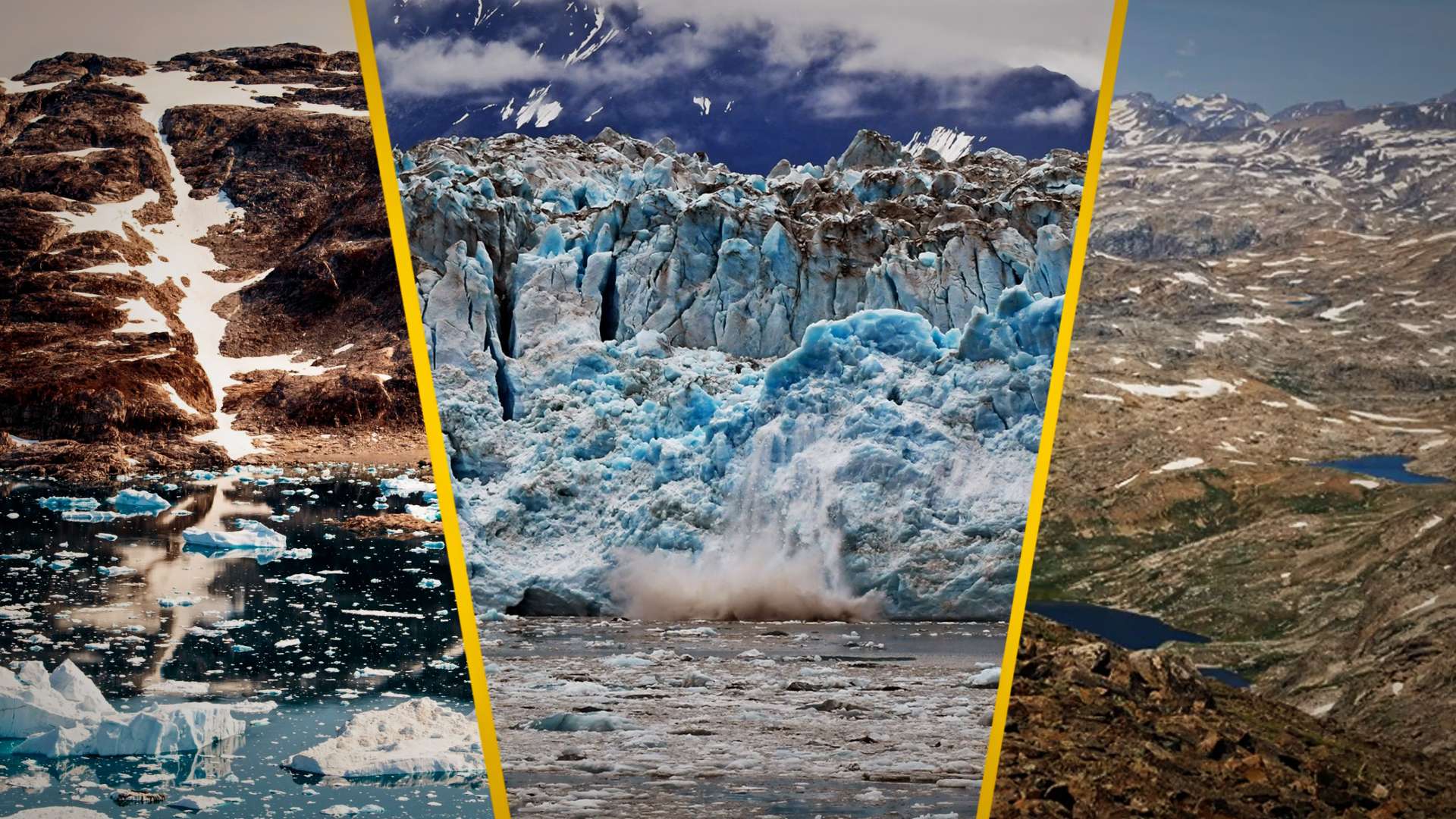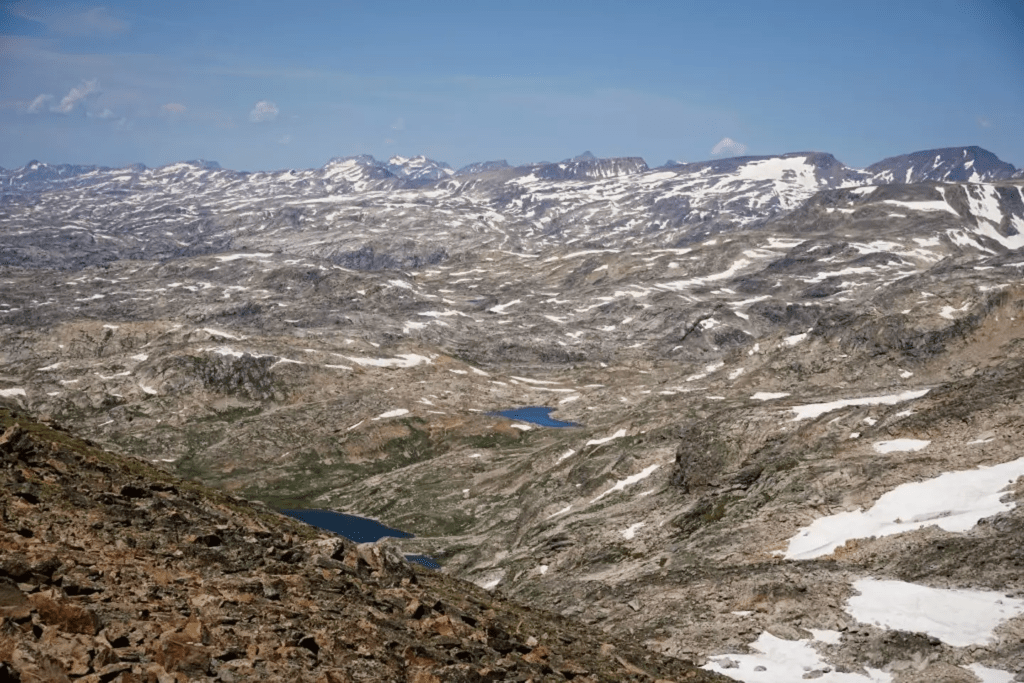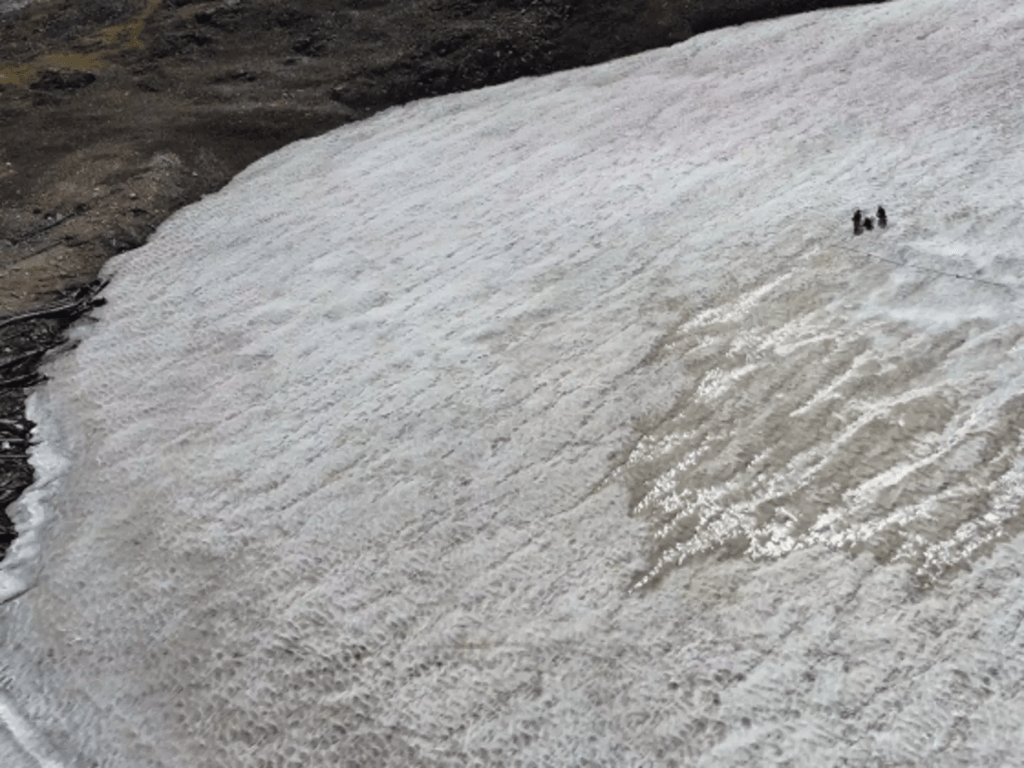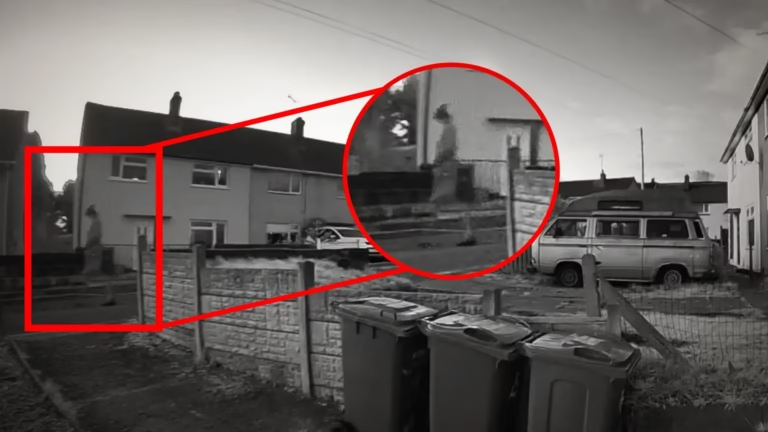The Secrets of Melting Ice: A 6,000-Year-Old Forest Reveals the Fragility of Our Planet

A Hidden Forest Beneath the Ice
In the vast expanse of the Rocky Mountains, a hidden secret has been uncovered. For the first time in over 6,000 years, scientists have discovered an ancient white bark pine forest, hidden beneath alpine ice that has now melted away. This discovery, found in the Beartooth Plateau in Wyoming, takes us on a journey through time—offering an astonishing glimpse into Earth’s past. And as with many of the greatest scientific discoveries, it all began with a change in the environment that allowed for the truth to come to light.
The forces of nature, like snow, ice, and Earth itself, are constantly working to conceal remnants of our planet’s distant past. Whether it’s a perfectly preserved bathhouse in Pompeii or the long-lost fossils of a prehistoric beast, ice and snow have the incredible power to keep the past hidden for centuries. But what happens when those forces change? What secrets are lost, and what treasures emerge from beneath the surface? Let’s dive into the fascinating discovery of this frozen forest.
The White bark Pine Forest: A 6,000-Year-Old Secret
The team of researchers that uncovered this ancient forest was met with an incredible surprise. The white bark pine forest, believed to be nearly 5,900 years old, was hidden beneath thick layers of alpine ice. These trees, which have long since fallen and died, were preserved for millennia. As the ice slowly melted away, the once-frozen forest was revealed, providing an extraordinary opportunity to study how the landscape looked thousands of years ago.

What makes this discovery so remarkable is the location. These trees were found about 180 meters higher than the current tree line—an elevation where it’s far too cold for trees to grow today. The fact that these trees existed in such an unlikely place is a key clue to understanding the climate and environment of the area during their time. Their preservation allows scientists to gain insight into how climate conditions have shifted over millennia, making this find invaluable for the field of paleoclimatology.
Related Reading: Understanding Paleoclimatology: How Scientists Study Earth’s Climate History
Frozen in Time: The Preservation of the Forest
Despite the trees falling and dying thousands of years ago, they are incredibly well-preserved. This level of preservation is largely due to the ice acting as a natural embalming agent. Joe McConnell, part of the team from the Desert Research Institute, explains, “The fallen trees were entombed in ice and protected from the elements for the next 5,000 years.” This is a prime example of how natural elements can preserve organic matter for much longer than one would expect.
One might wonder: how is it possible that such ancient remains were kept so well? The ice acted as a protective barrier, shielding the trees from wind, rain, and decay. The result is that scientists have been able to study the trees in a state of preservation that allows them to learn about ancient ecosystems, tree growth patterns, and even the climate of a time long past.
The Inevitable Thaw: A Warning About Climate Change
While the discovery of this ancient forest is an exciting scientific breakthrough, it also raises important concerns about the state of our planet today. The ice that kept these trees preserved for centuries is now melting away, revealing the forest in all its glory. This is not a random occurrence, but rather a direct consequence of anthropogenic climate change—a rise in global temperatures caused by human activity.
Related Article: How Climate Change Is Affecting Alpine Ecosystems
Cathy Whitlock, a climate scientist at Montana State University, states, “This discovery was possible because of anthropogenic climate change—rising temperatures are now exposing areas that have been buried in ice for millennia.” What was once hidden beneath thick ice sheets is now being revealed to the world, but at what cost? The very same climate change responsible for the unearthing of this forest is also accelerating the melting of glaciers and ice sheets across the globe.
The Fragility of Alpine Ecosystems
The irony of this discovery lies in the fact that the exposure of ancient forests and ecosystems provides researchers with unique data—data that would otherwise be buried under centuries of ice. Yet, this rare opportunity comes at a great environmental cost. As Whitlock emphasizes, “While such discoveries are scientifically interesting, they are also a sad reminder of how fragile alpine ecosystems are to climate change.”
The melting ice reveals ancient forests, frozen wildlife, and even volcanic activity that has been preserved for millennia. However, with the acceleration of global warming, these ecosystems face the threat of irreversible damage. The forests, species, and geological features that remain hidden today may very well be lost forever due to the continued warming of our planet.
Social Media Post: Share your thoughts on how climate change is affecting ancient ecosystems using the hashtag #ClimateChange and join the conversation.

What Does This Discovery Mean for Our Future?
This discovery is a powerful reminder of how quickly our world is changing—and how much of it remains out of reach until it’s too late. The rapid thawing of glaciers and ice sheets is uncovering remnants of a world that no longer exists, but it is also unveiling a reality we cannot ignore. Climate change is not just a far-off concern; it is happening now, and it is reshaping the planet in ways we are only beginning to understand.
Researchers like McConnell and Whitlock are committed to studying the ancient forests and ecosystems revealed by melting ice, but they are also sounding the alarm. The very ice that preserves these secrets is disappearing, and the consequences of this loss will be felt for generations to come.
The Bigger Picture: A Call to Action
As we continue to witness the effects of climate change on alpine ecosystems, it’s essential that we take action to protect our environment. The melting ice is not just a scientific curiosity—it’s a warning. As we face rising global temperatures, extreme weather events, and shifting ecosystems, the need for urgent climate action has never been clearer.
Further Reading: How to Help Combat Climate Change: Tips for Individuals
Join the Conversation: Social Media Engagement
The discovery of a 6,000-year-old forest hidden beneath melting ice is not just an exciting scientific revelation—it’s also an important reminder of how climate change is rapidly altering our planet. We encourage you to share your thoughts and raise awareness about the impacts of global warming using social media. Here are some ideas for posts and hashtags you can use to spread the word and join the ongoing conversation.
Social Media Posts:
- Twitter Post:
“Scientists just discovered a 6,000-year-old #WhitebarkPine forest hidden beneath alpine ice. But the real story here is climate change, which is melting glaciers at an alarming rate. What can we do to help protect these fragile ecosystems? #ClimateChange #EnvironmentalAwareness” - Instagram Post:
“A hidden forest, frozen for over 5,000 years, has been revealed in Wyoming’s Rocky Mountains—thanks to melting glaciers caused by #ClimateChange. While it’s incredible to see the past uncovered, it’s also a sobering reminder of the environmental challenges we face. Let’s raise our voices for the planet! 🌍🌲 #ClimateAction #MeltingIce #SaveOurPlanet” - Facebook Post:
“Did you know that melting ice in the Rocky Mountains has revealed a forest that’s over 6,000 years old? These ancient trees have been preserved for millennia, but now, thanks to climate change, they’re being exposed for the first time. This discovery is fascinating, but it also highlights the urgent need for action to combat climate change. What can we do to make a difference? Share your thoughts below. #ClimateCrisis #ClimateChangeAwareness #NatureUncovered”
By sharing these posts, you can engage with friends, family, and followers, and raise awareness about the importance of protecting our planet.
Share on Social Media:
Don’t forget to use hashtags like #ClimateChange, #GlobalWarming, #EnvironmentalProtection, and #SaveThePlanet to make sure your voice is heard across social media platforms.
Conclusion: The Secrets Beneath Our Feet
The discovery of a 6,000-year-old forest hidden beneath melting ice offers both awe and concern. It highlights the extraordinary power of nature to preserve our planet’s history while also exposing the dangers of an ever-warming world. As the ice melts away, we uncover new knowledge, but we also lose vital ecosystems and ancient wonders that may never be seen again.
Let this discovery serve as both a testament to the resilience of life and a call to action to protect the fragile ecosystems that remain. The melting ice may reveal secrets, but the real question is: what will we do to preserve the world for future generations?
Join the Conversation: Share your thoughts on climate change and its impact on ancient ecosystems on Twitter and Instagram with the hashtag #MeltingIceDiscoveries.
Featured Image Credit: ClimberKyle / Joe McConnell/Desert Research Institute






